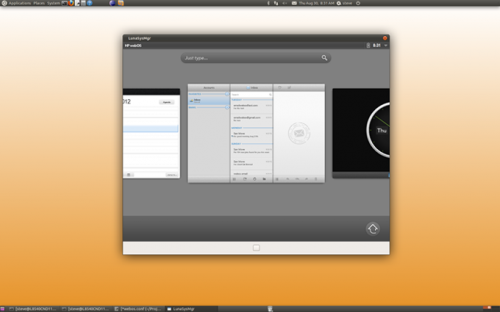September 3, 2012 report
Open webOS beta is released with two build environments

(Phys.org)—Last year, there was actually a time when things were looking great for HP's webOS. Under HP's ex-chief Leo Apotheker there was talk of making the webOS a device-compatible platform of choice for cars and appliances. There had been a push, too, to make a business-adoption case for webOS as "enterprise-ready." HP was trying to entice manufacturers and developers who would be willing to climb on board, in growing a webOS ecosystem. That would be making it all the more justifiable to have made an investment in the webOS in the first place, with HP's purchase of Palm at $1.2 billion. Apotheker was holding up the webOS as a superior operating system.
"It's not correct to believe that it should only be on HP devices. There are all kinds of other people who want to make whatever kind of hardware they make and would like to connect them to the Internet," he had said.
Could he have been right on the mark? Yet we all know the confusing ending. The OS went from hot agenda item to disposable, and outsiders wondered what next. HP announced it was discontinuing the TouchPad, a tablet computer powered by webOS, just weeks after it hit the market. In January this year, HP announced it was making webOS open source. It was subsequently named Open webOS.
In what may be entirely related news, Hewlett Packard recently announced a new "incubation company" called Gram.
HP is planning to launch Gram as an independent business under HP's umbrella. Gram will be run as a separate entity but funded by HP. According to a TechCrunch report on August 15, a flyer was sent out saying that "Gram is a new company leveraging the core strengths of webOS, Enyo and our Cloud offerings, as well as the firepower of our partners to create a technology that will unleash the freedom of the web." In other words, wrote TechCrunch, "we have no earthly idea what Gram is all about."
On August 31, HP released the open source beta for its webOS mobile operating system. The beta has 54 webOS components, with 450,000 lines of code. The code is under Apache license 2.0, which is considered as one of the most liberal. Open webOS is intended to be built on the Linux Standard Kernel 3.3.
Two build environments consist of one for desktop development which brings together elements released so far on the Ubuntu desktop, and a second OpenEmbedded build that provides an ARM emulator for porting to new devices. Open webOS uses a version of QtWebKit to render web pages and apps. The QtWebKit framework is being expanded to incorporate OpenAL Soft audio, OpenGL ES and WebGL graphics, and Gstreamer to handle streaming media.
Explaining its governance model, the project page states that Open webOS will accept contributions via a signoff process inspired by Linux Certificate of Origin. Also, the Open webOS project website is to host a wiki, source code repository, mailing list, and bug tracking system.
Any manufacturer can now build their gadget around this OS, but will they want to? That is the question posed by a number of industry bloggers, pessimistic about how much activity can be expected. The skeptics may be very surprised.
There is never a dull or easy answer for what's next for this OS. For one, HP is actually hiring. A message to the Open Web OS project page said, "Be part of our growth. We are continuing our hiring drive. Some great people have come on board and we are looking to add even more. Head on over to our jobs page for a full list of open positions."
At the time of this writing, there were over 20 full time jobs with "webOS" listed in the job titles. One such job, located in Sunnyvale in "cool new office space," describes its employers as a fast-paced startup with big ideas and with the software assets of Palm and backed by HP. "We built a new company to get the best of both worlds: small teams, fun and disruptive projects, with fast execution backed by HP for long-term success and disruption in the industry."
The job ad, for webOS Sr. Cloud Services Architecture, tells prospective applicants that the employers act like a startup "yet have the opportunity to scale with the support of a Fortune 10 shareholder that delivers $130bn in annual revenue." The applicant would be involved in the "design and implementation of webOS Cloud Infrastructure and Services (IaaS, PaaS, and SaaS)." One of the requirements would be experience "building complex eCommerce applications."
More information: blog.openwebosproject.org/post … webos-august-edition
© 2012 Phys.org



















